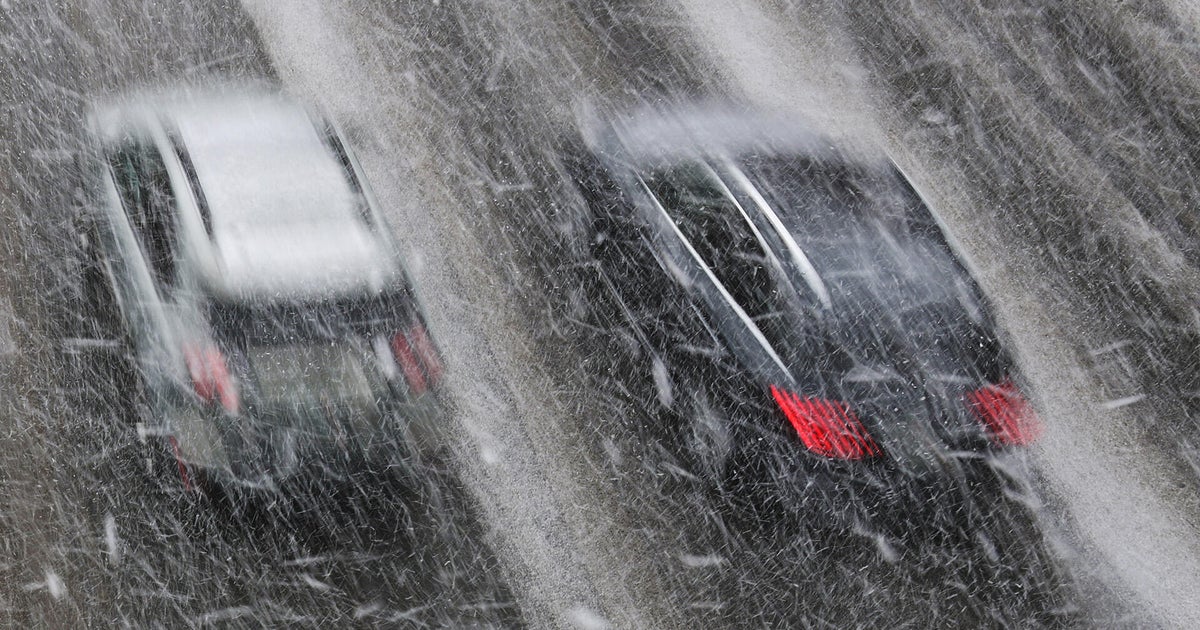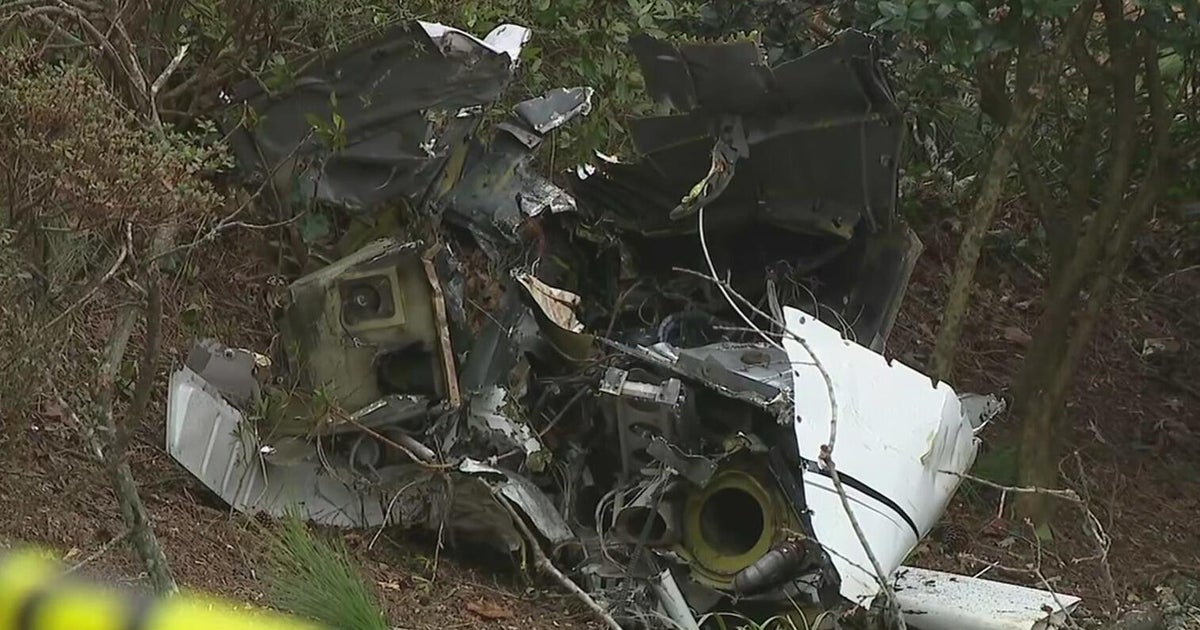Poop falling from the sky: Here's how often that happens
MINNEAPOLIS -- "It's a bird, it's a plane ... nope, it's poop!"
On May 12, residents of Burnsville, Minnesota were waiting in line at a Caribou Coffee drive-thru when their windshield was splattered with what they call "brown rain."
"The odor was so strong that the woman who was handing me my coffee noted how much it smelled," said Burnsville resident, Carisa Browne. "I mean, my cat had something similar to it this morning, so I've had a lot today with the poop."
"I had my A&P license, I went to school to be an aircraft mechanic, and I didn't know if there was even a way to release it mid-flight, so that's why I'm a little confused, I'm gonna look into it," said Browne. The Metropolitan Airports Commission says they are not aware of any incidents related to flight activity.
Browne did some Internet sleuthing and believes the culpable plane was a United Airlines flight to Denver. WCCO News reached out to United and got this response from their media relations department: "No reports on this from our end."
But mysterious substances falling from the sky are not totally uncommon.
Prior poops
In 2018, a 22- to 26-pound chunk of ice fell on the Fezilpur Badli village in India, startling residents. Some villagers thought it was an extra-terrestrial object, and even took samples home. A sample of the projectile was sent out for a chemical analysis, and a spokesperson for the International Aviation Authorities "strongly suspected" that the ice chunk was frozen airline excrement.
Luckily, in this 2018 case of flying excrement, no one was hurt.
A woman in central Madhya Pradesh in 2016 was not so lucky. She suffered a severe shoulder injury when she was hit by a football-sized chunk of ice that fell from the air and crashed through the roof of her house.
India and Burnsville, Minnesota are not the only places where there have been odorous objects reported falling from the sky.
In 2012, a Long Island couple were covered in "sludge" as a plane flew overhead. Another couple in Leicester, England also reported an incident where pungent "blue ice" hit their roof, broke apart, and landed on their heads.
So, what's the deal? Are airlines emptying their waste on us?
The short answer, is no...at least not on purpose.
Don't eat the blue snow
Most airplanes are configured with a modern "vacuum waste system" that sucks waste and wastewater into a sealed tank below the craft. Once a plane lands, the ground crew dispose of sewage using a "honey truck" that siphons the waste and disposes of it into an airport's underground sewage system.
Readers Digest reports that, on an average 747 flight, travelers would be expected to be responsible for roughly 1,000 flushes overall, or the equivalent of about 230 gallons of sewage. Sometimes, that can be too much sewage for a plane to handle, especially if it's malfunctioning. In those cases, waste can seep out of the tanks.
When a sewage tank or drain tube develops a leak, it creates what is referred to as "blue ice." Blue waste treatment liquids used in plane toilets turn to ice when exposed to freezing temperatures at high altitudes -- hence the name "blue ice."
Typically, blue ice gathers and stays on the outside of the aircraft, but sometimes it breaks off before landing. When it does break off, it often melts and evaporates before reaching the ground. Though, this depends on how high the plane is at the time it falls.
Waste leakages pose a serious concern for air safety. Aside from damage to homes and injury to people, blue ice has even caused damage to other planes. In one instance, blue ice knocked an engine off the wing of a plane.
This made us curious … how do other ways of transportation dispose of their waste? The answers may shock you.
Brown water
Cruise ships have been reported to routinely drop thousands of gallons of human sewage a day...most likely into whatever waterway they're sailing. An EPA survey found that cruise ships generate an average of 21,000 gallons of sewage and 170,000 gallons of graywater -- residual water that drains from sinks, showers, and laundry machines, often laden with detergents, oil, grease, food waste, and various pathogens -- a day.
There is a patchwork of federal, state, and international laws regarding how and where ships can dispose of their waste, but it's somewhat complicated.
For example, sewage needs to be treated if it's going to be flushed within three miles of U.S. coastline. Beyond that, it can be dumped in it's raw state. However, most cruise lines and trade associations have a policy against dumping untreated sewage anywhere.
What about trains? How do train lines dispose of their waste?
Until the 1990s, U.S. trains often drained their waste onto the tracks. When reaching stations, personnel would ask passengers not to use the bathroom. However, these days, most trains store waste in an onboarding holding tank.
But what about astronauts? How do they handle their "business"?
Planes, trains, and the International Space Station?
The answer is rather simple. Waste is either sent back to Earth or recycled.
Toilets on the International Space Station separate solid and liquid waste. Solid waste is tightly bagged and placed into an unmanned vehicle (known as a "Progress module") and is eventually returned to Earth, though burns up upon its re-entry into the atmosphere.
Since urine is 90% water, astronauts have found a way to put it to good use.
Liquid waste is boiled, distilled, and sent to a water processor where it undergoes a cycle of filtration and chemical purification until it can be used by the crew. Astronauts say, "Today's coffee is tomorrow's coffee!"
However, recycling liquid waste is a relatively new procedure. Historically, urine would be ejected into space. Due to the low temperatures in space, wastewater would quickly freeze into small crystals.
Rusty Schweickart, an astronaut on Apollo 9, once described a urine dump at sunset as "the most beautiful sight in orbit."
Space programs stopped using this method of disposal due to waste turning into orbital debris. NASA has been refining their method of urine purification for the last 20 years.
"As we travel farther from Earth on Artemis missions to the Moon and build toward longer, crewed missions to Mars, it's inevitable we'll need more reliable hardware and a reduced requirement for spares," said Arthur Brown, deputy manager of ECLSS integration and development at NASA's Marshall Space Flight Center in Huntsville, Alabama. "Even from the space station, it's a long way to the nearest hardware store or machine shop."
All in all, rest assured that objects flying in the air are least likely to be Superman or human excrement, rather birds or planes.







